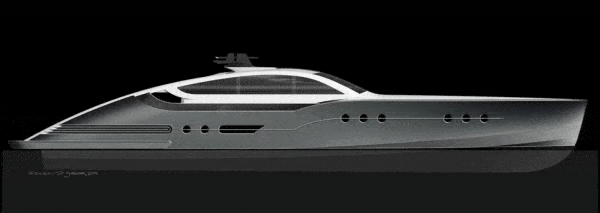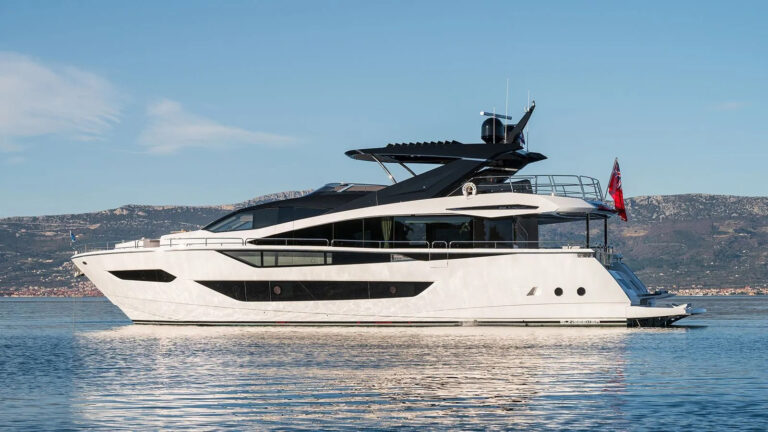
DLBA 125S Sport Yacht
Art deco took root in Paris in the 1920s and flourished internationally through World War II and beyond, influencing architecture, industrial design, visual arts and interior design. The term didn’t enter the popular lexicon again until the middle 1960s, after the exhibition Les Années 25, subtitled “Art Deco,” in Paris celebrated the 1925 Exposition Internationale des Arts Décoratifs et Industriels Modernes. Although historians tell us that art deco devoted itself to the purely decorative, it also included a streamlining style, as practiced by Raymond Loewy, Jean Bugatti, Harley Earl, Dr. Ferdinand Porsche and other industrial designers, that brought function to the form. This Donald L. Blount Associates (DLBA) 125S Sport Yacht follows along those lines.
The DLBA 125S started life as a platform on which to examine ways to meet the MLC 2600 rules establishing the spatial requirements for crew’s quarters aboard yachts. Peter Buescher, design project manager at DLBA, wrapped those accommodations in this whimsical shell. He’s served a smorgasbord of elements, which in lesser hands could give a viewer visual acid indigestion, but Buescher has mixed his motifs to complement one another.
This design flows aft from a bold, nearly plumb stem to a wonderful fastback descent to the swim platform. You may find its likeness in the stern sections of Earl’s 1947 Cadillac Sedanette, Bugatti’s 1936 Atlantique Coupe and Porsche’s 356 series coupes of the 1950s and 1960s. Although this shape often has taken a hiatus from favor, it always returns, as though it were a reincarnated soul. The automotive theme appears again in the length and camber of the foredeck, in the transition to the slope of the windshield and at the break in the sheer line. That’s exactly where you’d expect to find a door on a grand touring coupe from the 1930s through the 1950s. Picture a bon vivant driving along an alpine pass, one arm perched akimbo atop a rakish cut-away door.
Yes, that break has as much to do with sport-fishing boats as it does with sporty cars, but the styling goes all whimsical again, as the sheer kicks up in defiance of traditional marine themes — and in celebration of the possibilities a designer can entertain in the absence of the client. This flip finds its mates in the cockpit coaming, the after end of the house and, less evident, the bars that define the air-intake vents to the engine room. Flare in the bow sections will cast a continuously variable shadow along the topsides forward, which ought to reduce our perception of height, and just when the flare ceases to provide shadows, the portholes and the character line sever the topsides into palatable portions. You may remember that Harley Earl employed portholes on the side of the hood or fenders of his Buicks to add visual interest and break up the mass.
Streamlining may seem like an affectation on a yacht that won’t exceed 30 knots, but a 30-knot wind in one’s face quickly becomes tiresome. Recognizing the need for a comfortable open cockpit, Blount and his team have tested models in the wind tunnel to evaluate the flow of air over the seating areas and, working from that data, designed a superstructure to channel the flow and create a people-friendly dead space. That space allows normal conversation and eliminates annoying buffeting.
Although the DLBA 125S exists now purely as a concept, it succeeded in establishing the spatial relationships belowdecks and reinforced the notion that pod-drives open interior volume. Even more exciting, the packaging will dazzle the viewer.
DLBA Inc., 757-545-3700; www.dlba-inc.com









